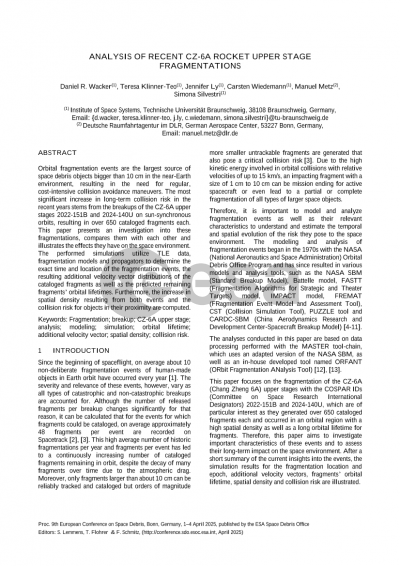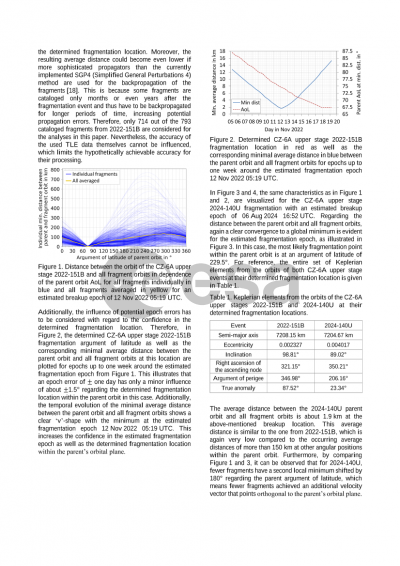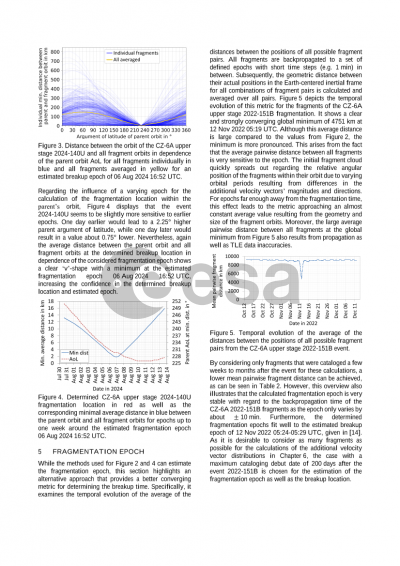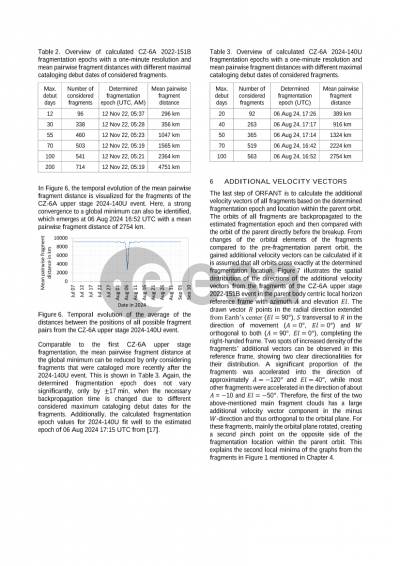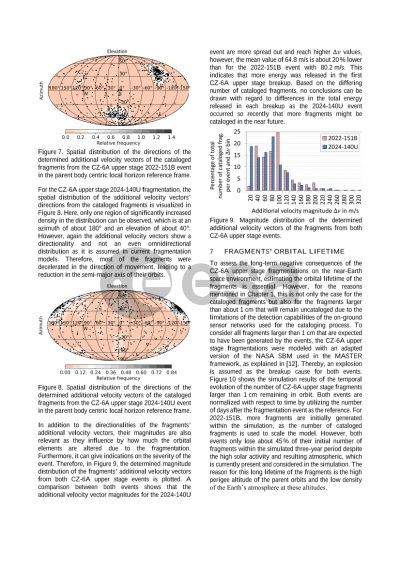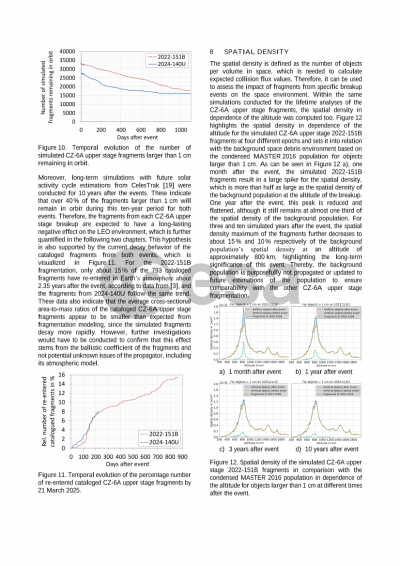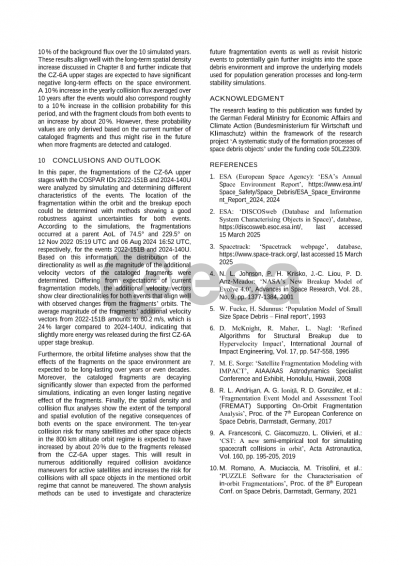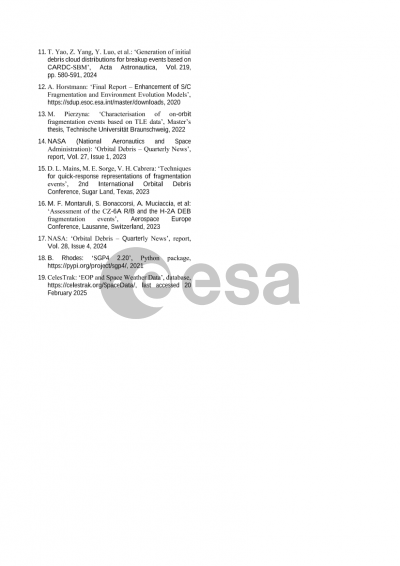Document details

Abstract
Orbital fragmentation events are the largest source of space debris objects larger than 1 cm in the near-Earth environment, resulting in the need for regular, cost-intensive collision avoidance maneuvers. The most significant increase in the long-term collision risk, since the collision between Cosmos 2251 and Iridium 33 in 2009, stems from the recent break-ups of CZ-6A rocket upper stages. Two major events took place in 2022 and 2024 in which the CZ-6A upper stages with the COSPAR-IDs 2022-151B and 2024-140U fragmented shortly after their launch in a sun synchronous orbit, resulting in over 650 catalogued fragments each. These events are of particular interest as they occurred in an orbital region with a high spatial density and a long orbital lifetime for fragments. This paper presents an investigation into the fragmentation events associated with the CZ-6A upper stages, compares them with each other and illustrates the effect that these events have on the space debris environment. Different aspects of these events are analyzed using TLE data and simulated by fragmentation models as well as propagators to determine important characteristics. These characteristics include the number of expected fragments larger than 1 cm, the time and location of the fragmentation, the resulting additional velocity vector distribution of the catalogued fragments and the predicted remaining orbital lifetime of the fragments. Furthermore, the increase in spatial density resulting from both events as well as the collision risk for objects in their proximity are calculated.
Preview
